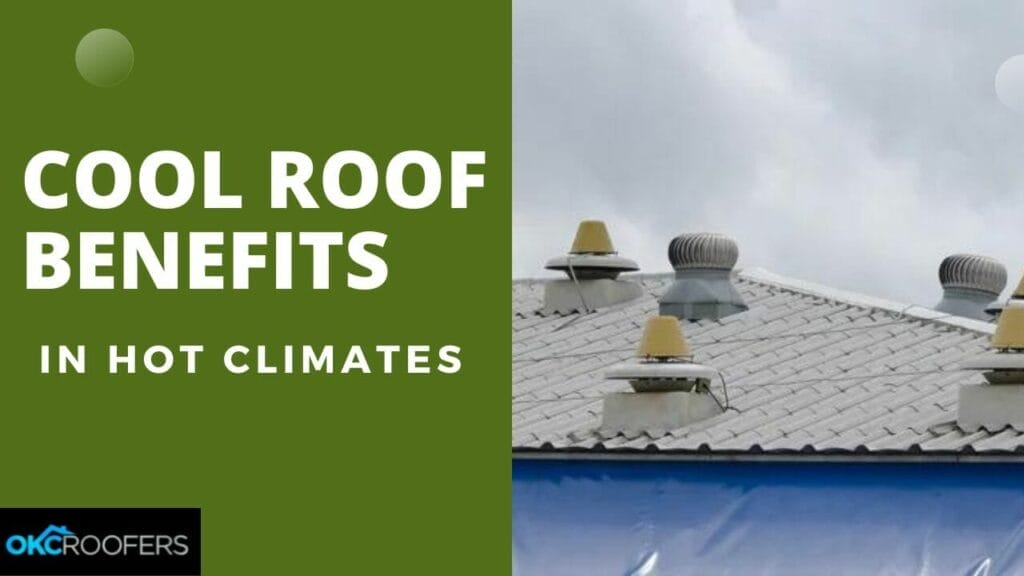Cool roofs emerge as a transformative solution in regions with scorching temperatures and the challenges they bring. Cool roofs are a sustainable architectural innovation that fights against the sweltering conditions found in hot climates. These roofs, designed to reflect sunlight and absorb less heat, have garnered attention for their potential to combat the urban heat island effect, reduce energy consumption, and contribute to climate adaptation strategies.
Hot climates, characterized by persistently high temperatures and intense solar radiation, present various challenges. Escalating cooling demands strain energy resources, increase greenhouse gas emissions, and exacerbate the urban heat island effect. As the global climate crisis deepens, addressing these challenges with innovative and practical solutions becomes imperative. Cool roofs provide a robust response by simultaneously offering energy efficiency and climate adaptation.
Understanding Cool Roofs
Explanation of Cool Roof Technologies
Cool roof technologies are centered around two fundamental principles: reflective roofing materials and thermal emissivity. Reflective materials can reflect a significant portion of sunlight away from the roof’s surface, minimizing heat absorption. These materials often possess high solar reflectance values, determining the proportion of solar energy reflected. On the other hand, thermal emissivity refers to a material’s capability to release absorbed heat. Excellent roof materials typically have high emissivity, ensuring efficient heat dissipation.
Mechanisms behind Cool Roofs
The mechanisms behind cool roofs involve solar reflectance and heat absorption reduction. Solar reflectance, measured on a scale of 0 to 1, quantifies the proportion of solar energy reflected by a material. Cool roofs with high reflectance values prevent heat from being absorbed into buildings, reducing indoor temperatures and cooling demands. By minimizing heat absorption, cool roofs aid in maintaining comfortable indoor environments even amidst scorching outdoor conditions.
Types of Cool Roofs
Cool roofs come in various forms tailored to specific requirements:
Reflective Coatings: These coatings, applied directly onto existing roofing materials, enhance solar reflectance and thermal emissivity. They offer a cost-effective way to transform conventional roofs into energy-efficient cool roofs.
Single-Ply Membranes: Comprising flexible, reflective materials, single-ply membranes are commonly used in commercial buildings. They offer durability and high solar reflectance, contributing to energy savings.
Green Roofs: A unique approach involves the integration of vegetation atop roofs. Green roofs provide insulation, shade, and cooling through evapotranspiration, reducing building heat transfer.
Benefits of Cool Roofs in Hot Climates
Energy Efficiency
Cool roofs yield substantial energy savings by reducing cooling costs. Buildings with cool roofs experience lowered indoor temperatures, leading to decreased demand for air conditioning during peak hours. This translates to reduced strain on energy grids and a tangible drop in consumer electricity bills.
Mitigation of Urban Heat Island Effect
Urban heat islands arise due to extensive urbanization and heat-absorbing surfaces. Cool roofs are pivotal in counteracting this phenomenon by reflecting sunlight and minimizing heat absorption. This lowers ambient temperatures, enhancing outdoor comfort and reducing the overall demand for cooling systems.
Extended Roof Lifespan
Cool roofs contribute to the longevity of roofing materials by minimizing temperature-induced wear and tear. Reduced thermal stress on roofing components translates into extended lifespan and fewer maintenance requirements, further enhancing the economic viability of cool roofs.
Environmental Impact
Adopting cool roofs reduces greenhouse gas emissions due to reduced energy consumption. By contributing to climate change mitigation, cool roofs align with global sustainability goals and demonstrate a proactive stance in addressing the climate crisis.
Case Study: Implementing Cool Roofs in a Hot Climate Region by OKC Roofers
Selection of Hot Climate Region: Oklahoma City
Oklahoma City’s scorching climate presents a prime opportunity to implement cool roofs. The region’s high temperatures, increased cooling demands, and urban heat island effect underscore the significance of adopting energy-efficient roofing solutions.
Description of the Region’s Climate and Challenges
Oklahoma City faces sweltering temperatures, particularly in summer, necessitating extensive cooling measures. It leads to elevated energy consumption, a strain on energy infrastructure, and an intensified urban heat island effect due to heat-absorbing surfaces.
Implementation of Cool Roofs
OKC Roofers, a forward-thinking roofing company, embraced the potential of cool roofs to address the region’s challenges. Reflective coatings and single-ply membranes were identified as suitable options, balancing cost-effectiveness and efficiency. Thoughtful consideration of building designs and local regulations ensured the seamless integration of cool roofs into the urban landscape.
Monitoring and Results
By meticulously collecting temperature and energy consumption data, OKC Roofers demonstrated the tangible benefits of cool roofs. A comparison between pre-cool roof and post-cool roof scenarios revealed a substantial reduction in cooling costs and energy consumption. The success of this implementation serves as a beacon for other regions facing similar challenges.
Potential Challenges and Considerations
Upfront Costs
While the initial investment in cool roofs may seem significant, it’s crucial to consider the long-term savings in energy costs and reduced maintenance expenses. The availability of incentives and rebates further sweetens the deal, making cool roofs an economically viable option.
Maintenance Requirements
Regularly cleaning and maintaining reflective surfaces are essential for optimal solar reflectance. Addressing wear and tear over time ensures that cool roofs continue to deliver their intended benefits over the long term.
Compatibility with Local Architecture
Blending the functionality of cool roofs with the aesthetics of traditional architecture is a crucial consideration. Striking a balance between energy efficiency and preserving local design sensibilities ensures widespread acceptance.
Climate Variability
Cool roofs should be designed with adaptability, capable of withstanding extreme weather events. It ensures the roofs’ resilience in climate variability and provides consistent benefits.
Global Initiatives and Success Stories
Across the globe, cities and regions have adopted cool roofs with remarkable results. From Tokyo to Los Angeles, cool roof implementation has significantly reduced temperatures, energy consumption, and carbon emissions. These success stories serve as inspiring examples for other communities to follow suit.
Conclusion
Cool roofs are a pioneering solution to the challenges posed by hot climates. Their ability to enhance energy efficiency, mitigate the urban heat island effect, extend roof lifespan, and contribute to environmental sustainability is undeniable. As the climate crisis intensifies, adopting cool roofs emerges as a call to action for governments, businesses, and individuals to contribute to a more sustainable and resilient future collectively. By embracing cool roofs, we have the power to transform the built environment and pave the way for a cooler, more energy-efficient world.








